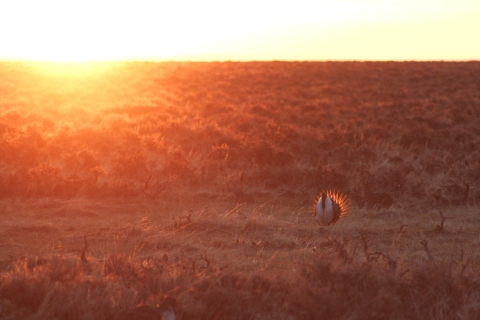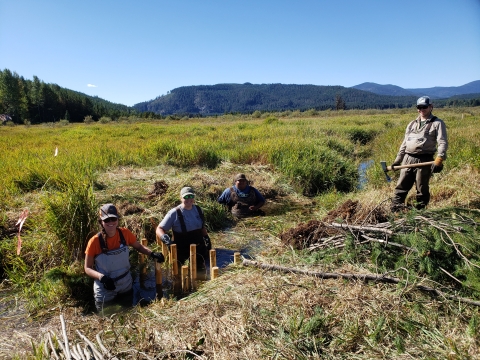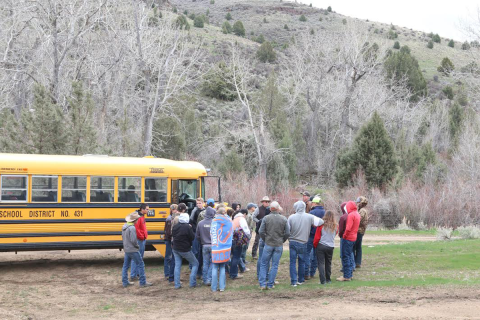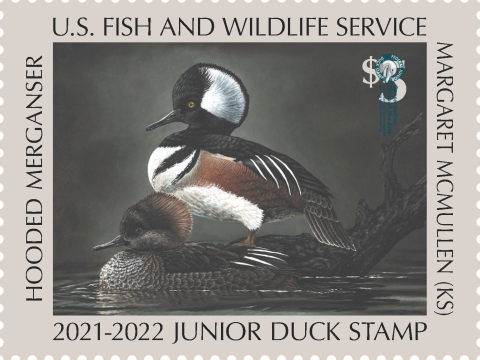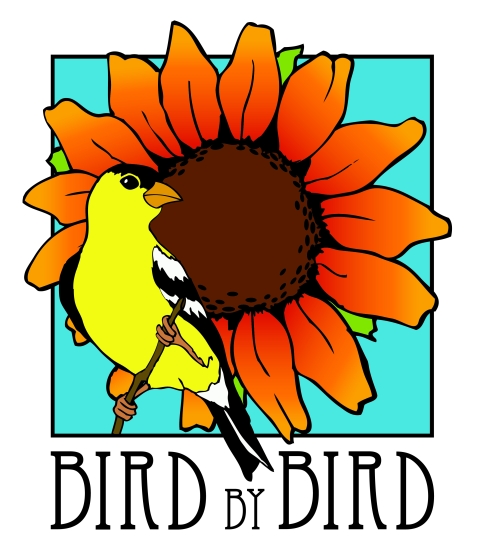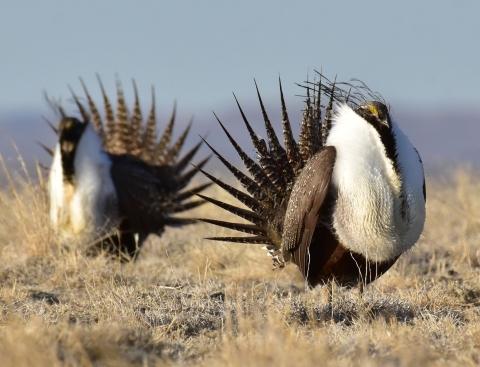Ways to Get Involved
Volunteering
Discover for yourself what tens of thousands of volunteers have learned: Volunteering for the U.S. Fish and Wildlife Service is fun and rewarding in many ways. Master new skills. Meet new friends. Enjoy a sense of accomplishment from doing your part to further wildlife conservation for the pleasure of generations to follow. Check out our station's latest volunteer opportunities at America's natural and cultural resources volunteer portal.
Our Partners
The Idaho Fish and Wildlife Office is committed to building partnerships which encourage conservation and preservation of our natural and cultural resources. Partnerships with the Idaho Fish and Wildlife Office bring innovative approaches to manage and conserve native fish, wildlife and plant species such as migratory birds, and threatened, endangered, or other sensitive species. We often work with landowners across the State of Idaho in habitats such as wetlands, riparian riparian
Definition of riparian habitat or riparian areas.
Learn more about riparian , sagebrush sagebrush
The western United States’ sagebrush country encompasses over 175 million acres of public and private lands. The sagebrush landscape provides many benefits to our rural economies and communities, and it serves as crucial habitat for a diversity of wildlife, including the iconic greater sage-grouse and over 350 other species.
Learn more about sagebrush , forest, working landscapes, and aquatic habitats.
Our nation’s private landowners are critical to the success of the U.S. Fish and Wildlife Service’s mission to conserve, protect, and enhance fish, wildlife, plants, and their habitats. The Service has many tools and programs for conservation of fish, wildlife, and plants on private lands.
Tools for Private Landowners and Tribes
Learn more about the Partners for Fish and Wildlife Program.
Outreach
We provide outreach and education programs for a variety of events and activities. Based on availability, we are willing to present programs on natural resource-related topics for most groups or organizations. We often work with schools, government agencies, non-profit organizations, and professional organizations. We speak on a variety of topics, including threatened and endangered species, habitat, pollinators, and invasive species invasive species
An invasive species is any plant or animal that has spread or been introduced into a new area where they are, or could, cause harm to the environment, economy, or human, animal, or plant health. Their unwelcome presence can destroy ecosystems and cost millions of dollars.
Learn more about invasive species . If you are interested in having the Fish and Wildlife Service present at one of your events, please contact us at ifwo@fws.gov.
Education Programs
Sage-grouse in the Schools
The Sage-grouse in the Schools Program is led by the Idaho Fish and Wildlife Office, but was cooperatively developed and implemented by many partners, including The Nature Conservancy, Local Sage-grouse Working Group members, and federal and state agencies. Students attend tours of sage-grouse leks (breeding grounds) to observe breeding season behavior, and they also work on conservation projects on private landowners’ property. For many of these students, the field trips are their first-ever encounter with the birds. After watching male sage-grouse puff and strut on the leks, the students visit a working ranch and help implement habitat improvement projects. Ranging from fence flagging to habitat reseeding, the projects teach students about range management and habitat improvement, but more importantly, the projects help students learn about the interconnectedness of Idaho’s working ranch lands and conservation. For more information, please write to IFWO@fws.gov and read a story about a field trip.
Junior Duck Stamp Competition
The Fish and Wildlife Service's Jr. Duck Stamp Conservation and Design Program is a dynamic art- and science-based curriculum that teaches wetland and waterfowl conservation to students in kindergarten through high school. The program encourages students to explore their natural world, invites them to investigate biology and wildlife conservation principles, and challenges them to express and share what they have learned with others. For more information, visit the National Jr. Duck Stamp web page.
Bird by Bird of Idaho
Bird by Bird is a unique science education program that uses bird watching and bird feeding to connect youth with nature and to instill respect for our natural resources. Participating schools are provided with all the materials needed to set up a bird watching station for their students. This includes bird feeders and bird seed, as well as binoculars and a great collection of bird books. Bird by Bird facilitators make regular visits to the classrooms to provide biological assistance and equipment training.
Participating students are in turn trained to become citizen scientists. They collect data on the birds they see at the feeders and on field trips and submit this data to a national database that is used by researchers to study bird populations across North America. This provides students with an extremely valuable lesson on what science really means and how we can work together to conserve bird populations. For more information, visit the Bird by Bird Webpage.
Partners in Education
In addition, our partners in natural resource education have many opportunities to involve youth in nature and the outdoors. As we help children to understand the natural world, we not only improve the lives of our youth, but we help create a passion for natural resources, benefiting the future of conservation.
- Make your Idaho home a home for wildlife
- Boise Foothills Learning Center
- Idaho Department of Fish and Game's MK Nature Center
- Children & Nature Network
- Deer Flat National Wildlife Refuge
- Intermountain Bird Observatory
- Idaho Environmental Education Association
- McCall Outdoor Science School
- Teton Regional Land Trust
- Teton Science Schools
- Yellowstone Institute
- Bees to Bears
Download educational materials here.
Download the sagebrush sagebrush
The western United States’ sagebrush country encompasses over 175 million acres of public and private lands. The sagebrush landscape provides many benefits to our rural economies and communities, and it serves as crucial habitat for a diversity of wildlife, including the iconic greater sage-grouse and over 350 other species.
Learn more about sagebrush curriculum here



